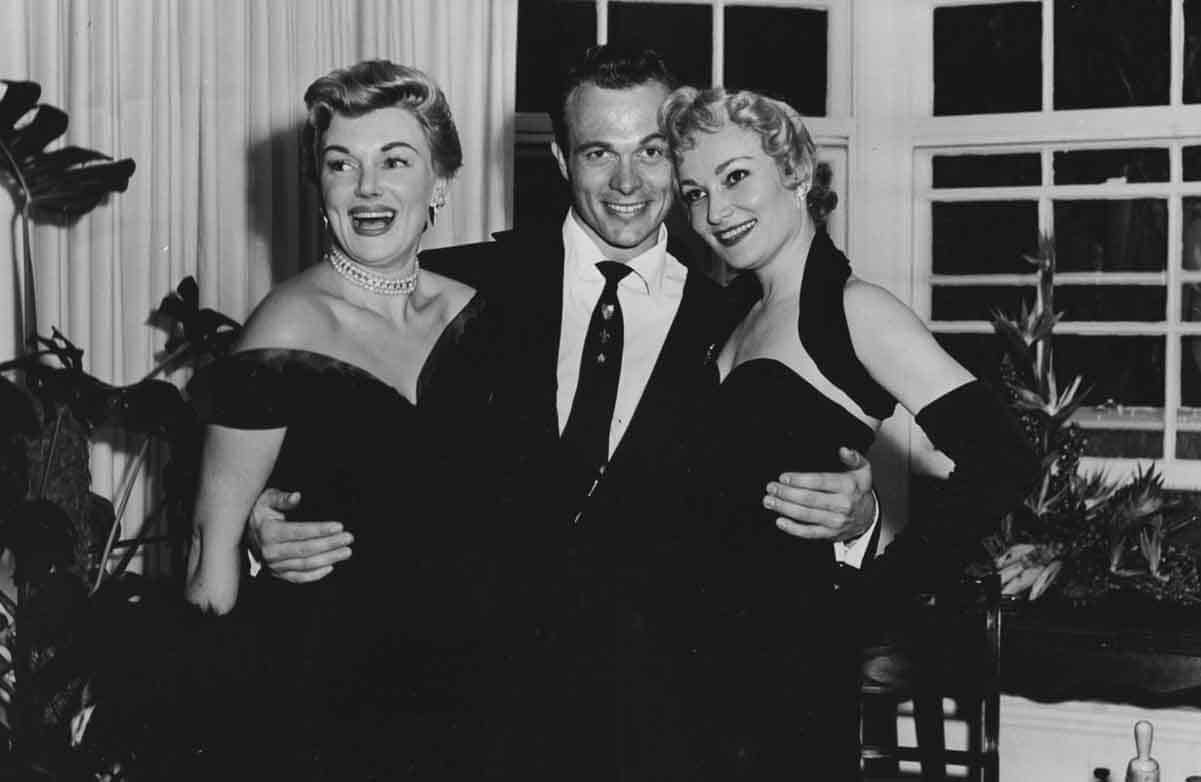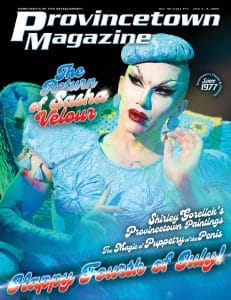Steve Rubell and Ian Schrager outside Studio 54 Image courtesy of A&E
by Steve Desroches
Every aspect of modern American life is increasingly presented through the lens of wealth and celebrity. The rich and famous control the narrative. The tragedies of life in Darfur get attention because the cameras follow George Clooney there. When covering the issues of the gender gap in pay, the media doesn’t profile everyday women, but rather Jennifer Lawrence, noting she only got paid $20 million to her male co-star’s $25 million, numbers that boggle the mind of the average worker. When trying to conceive of a Democrat to challenge Donald Trump in 2020 there was a frenzy to pick Oprah Winfrey, treating her inspiring speech at the Golden Globe Awards as if she gave it at the Democratic National Convention. And Kim Kardashian, who is famous for being famous, gets entrйe to the Oval Office and as much press as when a foreign head of state visits. The Sword of Damocles hanging over Trump’s head might be Robert Mueller’s investigation, but when, or if, it falls it could very well be beause of Stormy Daniels instead. Wouldn’t that be fitting?
How did we get here, exactly? Two documentaries at this week’s Provincetown International Film Festival explore this and more as writer and documentarian Matt Tyrnauer’s Studio 54 and Scotty and the Secret History of Hollywood come to the screens of the Cape tip. Both films take us behind the curtains of two highly mythologized institutions, as Tyrnauer takes well-known stories and focuses on the angles that are less obvious, showing what was illusion and what was real. And if any two things obscure reality with the scrim of celebrity worship and public relations mythological spin, it’s the infamous New York disco Studio 54 and Hollywood.
“Hollywood rested on a lot of lies.”

“Studio was the modernization of what Hollywood started,” says Tyrnauer. “People magazine and Rupert Murdoch’s New York Post really perpetuated it. We are now the product of all of that, the addiction to celebrity and the kind of dumbing down of the culture. A lot of this did start at Studio.”
From the moment it opened on April 26, 1977, Studio 54 was a cultural phenomenon. Owners Steve Rubell and Ian Schrager (with silent partner Jack Dushey) curated a hedonistic circus full of the famous, the infamous, as well as a bevy of beautiful people alongside the eccentric, completely transforming nightlife forever. Studio 54 was one of the cultural touchstones that defined the times. While the documentary Studio 54 delves into the famed decadence of Bianca Jagger’s birthday party, where a naked man brought her into the club on a white horse and a bleary-eyed Elizabeth Taylor was fed cake by Halston, it follows a less glamorous trail looking into the rapid rise and fall of the temple of the disco era. It also examines how Studio 54 grew out of black and gay culture, and its role in presenting the fevered pitch of the sexual revolution in the post-birth control pill, pre-AIDS days.
Scotty and the Secret Life of Hollywood is like watching a gardener plant a seed that blooms into Studio 54. This film introduces audiences to Scotty Bowers, one of the early foot soldiers in the Sexual Revolution. The charming and handsome midwestern Marine settled in Los Angeles after World War II, working at a gas station on Hollywood Boulevard. After a chance hook up with actor Walter Pidgeon, Bowers quickly became not so much a pimp to the stars as a sexual fixer, setting up closeted gay, lesbian, and bisexual celebrities with tricks, as well as straight Hollywood power brokers looking for an orgy or any other attempt to fulfill a sexual desire frowned upon by the conservatism of the day.
Bowers had long been a legend in Hollywood, but he kept his secrets until 2012 when he wrote Full Service: My Adventures in Hollywood and the Secret Sex Lives of the Stars, the ultimate f*ck-and-tell book. In it he confirms many longtime rumors about celebrities like Cary Grant, Katherine Hepburn, Spencer Tracy, as well as some surprising tales involving Lana Turner, Ava Gardner, and the Duke and Duchess of Windsor. Despite the salaciousness of the subject matter, Scotty and the Secret Life of Hollywood unravels an intricate web of beards, fake marriages, and conservative sexual propaganda to make sure a celebrity’s sexual orientation stayed a secret, so as not to attract the attention of the vice squad acting as morality police or the poison pen of gossip columnists who could destroy a career with one blind item.
“Nothing was what it appeared in the Golden Age of Hollywood,” says Tyrnauer. “Hollywood rested on a lot of lies. A lot of that rested on the view of the studios of celebrities as commodities. Seventy years or so later, I wanted to understand the nature of the myths we’ve been sold.”
Throughout each of the documentaries, which feature the glorious complexities of each story, the vein that pulses throughout both is that of sexual freedom in a culture that— try as it might—can’t shake a carnal immaturity or its love-to-hate-sex self-flagellation rituals. American culture crests in periodic sexual waves, and again, as with most things, we look to the wealthy and famous to interpret our nation’s inner sexual thoughts and desires and either punish or celebrate them for doing so.
Also a writer for Vanity Fair and the son of the late Robert van Scoyk, a television writer and producer, Tyrnauer has an insider’s eye, but knows how to create distance for objectivity. This leaves some room for multiple perspectives, including an exploration into the anger and condemnation the subjects of these two films can and often do elicit. Which begs questions as to why exactly, all these years later, Studio 54 and Scotty Bowers can still upset people so much.
“It probably does come from American Puritanism and a discomfort with sex,” says Tyrnauer. “With Studio, though, people found the velvet rope distasteful. It forever changed nightlife around the world, but the Disco Sucks movement was gathering at the time, and many see it as a direct reaction to Studio 54. The country was in recession, and here are all these images of decadence. But politicians used it to create a false moral superiority to gays and minorities, to excite the passions of bigots. With Scotty, some do not want to know the truth; they don’t want the myths taken away for some reason. ”
The Provincetown International Film Festival is June 13 – 18 at various venues in Provincetown and Wellfleet. To find out when the films in this story are being shown visit the Festival box office on the first floor of Whalers Wharf mall , 237 Commercial St., Provincetown, call 508.246.9171, or visit provincetownfilm.org.











